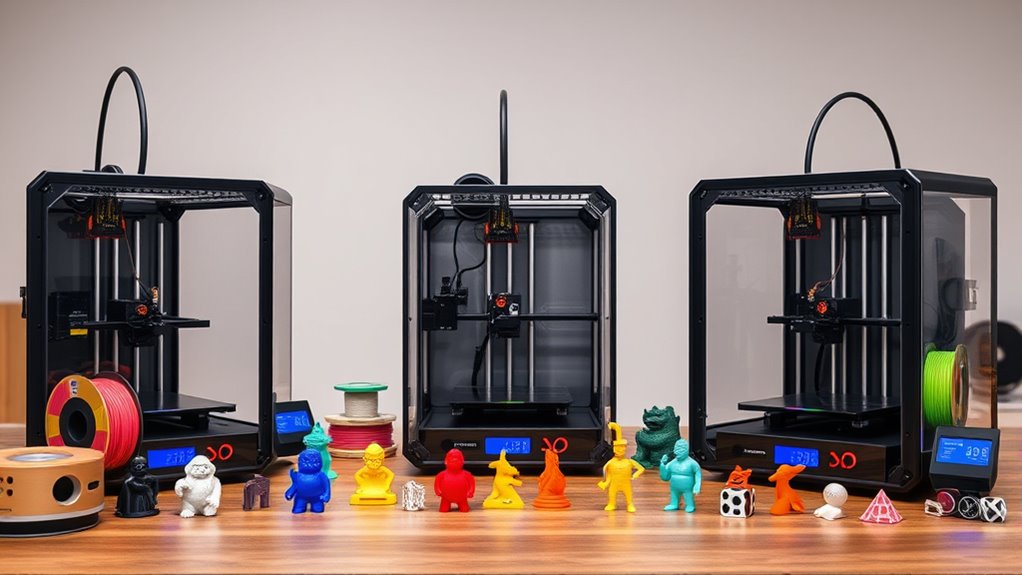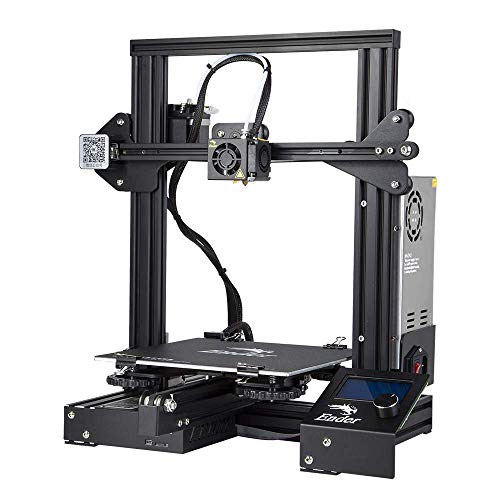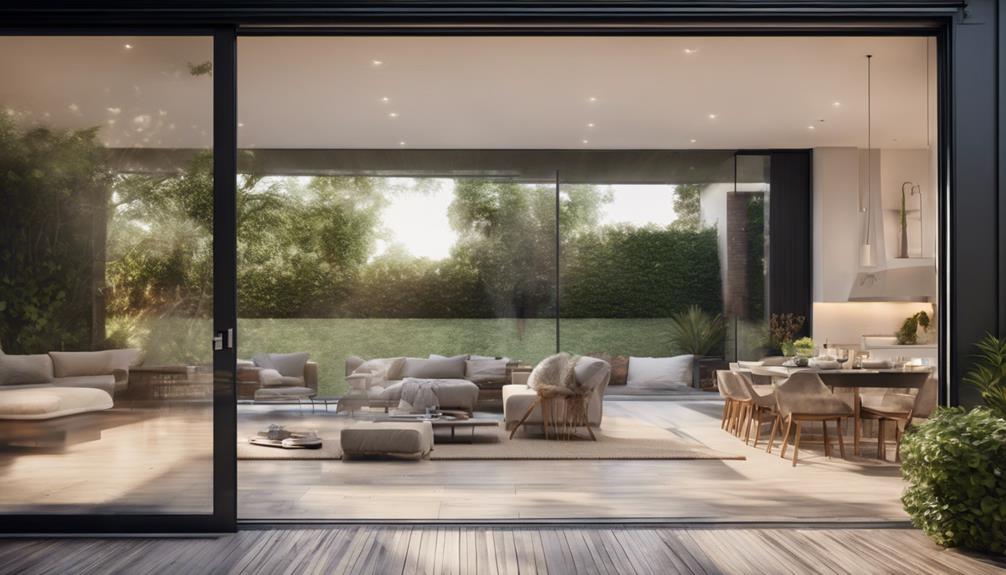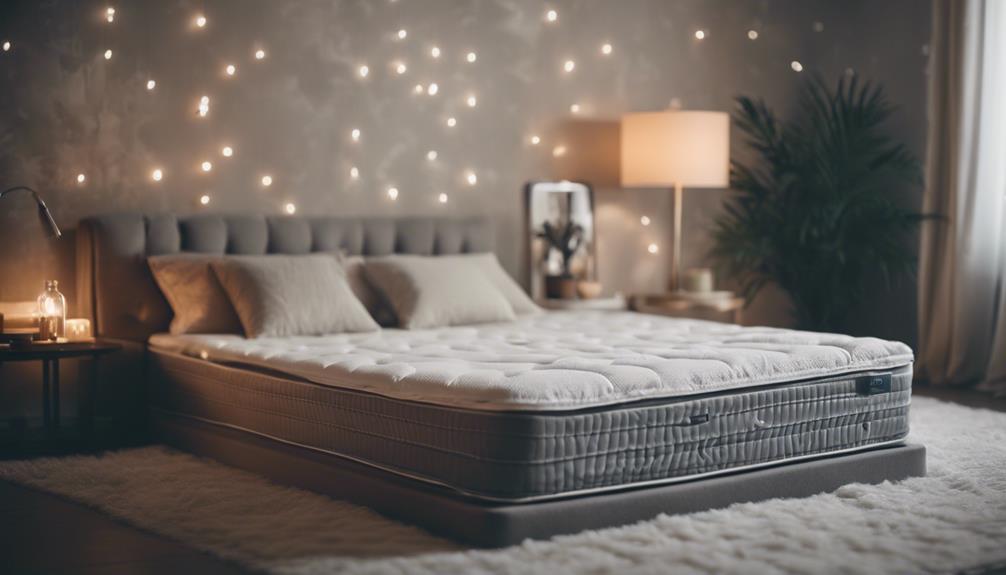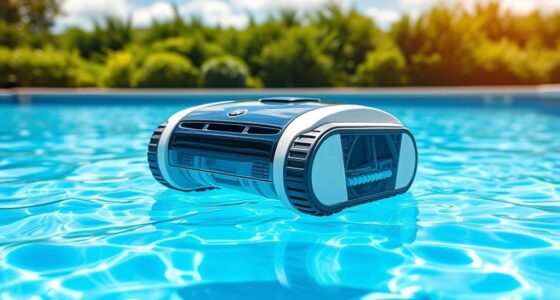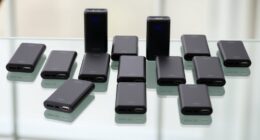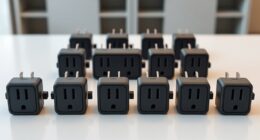If you’re searching for the 15 best budget 3D printers of 2025 that offer reliable quality without breaking the bank, I’ve got you covered. These models feature fast speeds, multi-color printing, auto-leveling, and compatibility with various filaments, making them suitable for hobbyists, educators, and small professionals alike. Many are easy to set up and maintain, with user-friendly interfaces and compact designs. Keep exploring to find out which options suit your needs best.
Key Takeaways
- Budget 3D printers in 2025 offer multi-color, high-speed, and auto-leveling features for professional-quality prints at affordable prices.
- Models like Creality Ender 3 and ELEGOO Neptune 3 Pro balance cost, ease of use, and reliable performance for beginners and hobbyists.
- Compact, fully assembled designs with user-friendly interfaces simplify setup and maintenance, minimizing technical barriers.
- Support for diverse filament types, including PLA, PETG, TPU, and resin, enhances versatility for various projects without high costs.
- Well-reviewed options provide durable, stable, and quiet operation, ensuring consistent quality without breaking the bank.
FLASHFORGE AD5X 3D Printer, Multi-Color, CoreXY, Auto Leveling
If you’re looking for an affordable 3D printer that doesn’t compromise on speed or multi-color capabilities, the FlashForge AD5X is an excellent choice. It offers rapid printing speeds up to 600mm/s with a stable CoreXY structure, supporting up to four colors at once for vibrant multi-material prints. The 300°C direct drive extruder handles various filaments like PLA, PETG, and TPU, while interchangeable nozzles guarantee precision or speed. Automatic bed leveling, advanced cooling, and vibration compensation assure high-quality results. With user-friendly features like resume printing and remote control, it’s perfect for prototyping, batch production, and detailed projects on a budget.
Best For: hobbyists, educators, and small-scale manufacturers seeking a high-speed, multi-color 3D printer with easy setup and versatile material compatibility.
Pros:
- Supports up to four colors simultaneously for vibrant multi-material prints
- Fast printing speeds up to 600mm/s with stable CoreXY design
- User-friendly features like automatic bed leveling and remote control
Cons:
- Compatibility issues with standard slicers requiring file conversion
- Software bugs and crashes, especially on MacOS, affecting workflow
- Challenges with leveling, calibration, and filament feeding that may need user adjustments
FLASHFORGE AD5M 3D Printer
The FLASHFORGE AD5M 3D Printer stands out as an excellent choice for hobbyists and small-scale professionals who need fast, reliable results without breaking the bank. Its Core XY design allows speeds up to 600mm/s and quick acceleration, making it ideal for rapid prototyping. The one-click auto-leveling guarantees perfect first layers every time, saving setup time. Support for multiple nozzle sizes and a dual-sided PEI platform makes swapping and removing prints easy. With a build volume of 220x220x220mm and a warm-up time of just 35 seconds, it delivers high-quality, detailed prints across various materials, perfect for creative projects or functional parts.
Best For: hobbyists and small-scale professionals seeking fast, reliable, and high-quality 3D printing with easy setup and versatile material support.
Pros:
- Rapid print speeds up to 600mm/s with high acceleration for efficient prototyping
- Automatic one-click auto-leveling ensures consistent first layers and easy calibration
- Supports multiple nozzle sizes and materials, with quick nozzle swaps and a dual-sided PEI platform
Cons:
- Occasional filament jams, nozzle clogging, or extruder issues after extended use
- Limited multi-color printing capabilities and occasional connectivity problems with software
- Some users experience hardware maintenance needs such as replacing PTFE tubes or extruders over time
Official Creality Ender 3 3D Printer
The Creality Ender 3 stands out as an ideal choice for beginners and hobbyists seeking an affordable, customizable 3D printer. Its open-source design and manageable build volume make it versatile for various projects. With features like resume printing after power loss and support for SD cards or computer connection, it’s user-friendly. Assembly takes about 2-4 hours, and with online tutorials, calibration becomes easier. Many users upgrade parts over time, enhancing performance. Despite some initial setup challenges, the Ender 3 offers excellent print quality and a strong community for support. It’s a reliable, budget-friendly option that helps users develop their 3D printing skills.
Best For: beginners and hobbyists looking for an affordable, customizable 3D printer with strong community support and upgrade potential.
Pros:
- Easy to assemble with online tutorials and community guidance
- Good print quality suitable for detailed models after upgrades
- Open-source design allows for extensive customization and improvements
Cons:
- Requires initial calibration and occasional troubleshooting for optimal results
- Some components, like power supplies or bed alignment, may need replacement or adjustment
- Firmware bugs and hardware inconsistencies can affect performance without technical intervention
Official Creality Ender 3 3D Printer
For anyone seeking an affordable yet reliable 3D printer in 2025, the Creality Ender 3 stands out as an excellent choice. It offers high-precision printing with up to ±0.1mm accuracy and a spacious build volume of 220 x 220 x 250 mm, perfect for small batches or prototypes. Its rapid-heating bed reaches 110°C in five minutes, ensuring good adhesion and minimal warping across various filaments. Assembly is straightforward, supported by online tutorials, and its open-frame design makes manual leveling manageable. Overall, the Ender 3 delivers consistent, quality prints at an unbeatable price, making it a top budget pick for hobbyists and beginners alike.
Best For: hobbyists, beginners, and budget-conscious users seeking reliable, high-precision 3D printing for small projects and prototypes.
Pros:
- Affordable price point with high-quality, detailed prints
- Easy to assemble with clear online tutorials and partial pre-assembly
- Compatible with various filament types like PLA, ABS, PETG, and TPU
Cons:
- Manual bed leveling can be challenging and requires proper setup
- Lacks automatic leveling features, needing careful calibration
- Some users experience filament feeding or hotend clogging issues requiring troubleshooting
ELEGOO Neptune 3 Pro FDM 3D Printer with Auto Bed Leveling
If you’re searching for an affordable 3D printer that doesn’t compromise on quality, the ELEGOO Neptune 3 Pro stands out as an excellent choice for beginners and hobbyists alike. It features a large build volume of 8.85×8.85×11 inches, auto bed leveling with a high-precision sensor, and a magnetic, removable metal bed for easy print removal. Its dual lead screws and silent stepper motors ensure stable, accurate movement, while the dual-gear direct extruder provides smooth filament feeding. Compatible with various filaments like PLA, TPU, PETG, and ABS, it offers reliable performance at a budget-friendly price, making high-quality printing accessible to all.
Best For: beginners and hobbyists seeking an affordable, reliable 3D printer with high-quality output and easy setup.
Pros:
- Auto bed leveling with high-precision sensor ensures smooth first layers and better print success.
- Large build volume of 8.85×8.85×11 inches accommodates a variety of projects.
- Quiet operation (around 47-48dB) and easy removal of the magnetized, metal print bed enhance user experience.
Cons:
- Manual lacks some detailed setup instructions, such as magnetization and bed removal procedures.
- Occasional issues like nozzle clogging may require routine maintenance or part replacement.
- Limited to a maximum nozzle temperature of 220°C, which may restrict some high-temperature filament use.
Creality Ender 3 V3 SE 3D Printer
Designed for users seeking high-speed printing without sacrificing quality, the Creality Ender 3 V3 SE stands out as an excellent choice in the budget 3D printer market of 2025. It supports 250mm/s speeds with quick acceleration, saving up to 73% of printing time while maintaining precision. The dual-geared extruder handles various filaments like PLA, TPU, and PETG reliably. Its auto-leveling sensor and preassembled design make setup straightforward, taking about 20 minutes. Many users praise its high speed, consistent quality, and ease of use, though some report hardware durability issues. Overall, it’s a solid option for both beginners and experienced makers.
Best For: hobbyists and small-scale professionals seeking a high-speed, reliable 3D printer that offers easy setup and versatile filament compatibility.
Pros:
- Supports fast printing speeds of up to 250mm/s with quick acceleration, saving time
- Auto-leveling sensor and preassembled design simplify setup and calibration
- Compatible with multiple filaments including PLA, TPU, and PETG for versatile projects
Cons:
- Some users report hardware durability issues such as electrical failures and broken connectors
- Limited software support with some slicers requiring third-party solutions for advanced features
- While easy to assemble, occasional assembly challenges and the need for online tutorials are noted by users
Mini 3D Printer for Beginners
The Mini 3D Printer for Beginners stands out as an ideal choice for newcomers who want an easy-to-use and reliable device. Its straightforward setup means you can load models onto a memory card, insert it, and start printing in minutes. Controls are simple, with dedicated + and – keys for material handling, so you can focus on your designs rather than technical hurdles. Compact yet capable, it supports detailed prints up to 0.05mm resolution using PLA or TPU filaments. Quick to heat and built from durable materials, it’s perfect for educational purposes, hobbyists, or anyone exploring 3D printing without breaking the bank.
Best For: beginners, educators, and hobbyists seeking an easy-to-use, reliable 3D printer for small-scale, detailed projects.
Pros:
- User-friendly operation with straightforward setup and intuitive controls
- Supports high-resolution printing up to 0.05mm with compatible filaments like PLA and TPU
- Compact and durable design suitable for home, classroom, or makerspace environments
Cons:
- Limited build volume of 4 x 4 x 4 inches may restrict larger projects
- Supports only specific filament types (PLA and TPU), limiting material versatility
- May require manual calibration and maintenance for optimal performance
FLASHFORGE AD5M 3D Printer with Auto Calibration and Quick-Swap Nozzle
The FLASHFORGE AD5M stands out as an excellent choice for beginners and hobbyists seeking high-speed, reliable 3D printing without breaking the bank. Its all-metal CoreXY structure delivers durability, stability, and quiet operation at speeds up to 600mm/s. The large 220x220x220mm build volume, combined with a flexible PEI steel bed, makes it versatile for various projects. Automatic bed leveling and a quick-swap nozzle system simplify setup and maintenance, saving time. User-friendly features like a touchscreen interface and remote monitoring further enhance the experience. Overall, the AD5M offers impressive speed, quality, and ease of use at an affordable price point.
Best For: hobbyists, beginners, and small-scale professionals looking for a fast, reliable, and easy-to-use 3D printer at an affordable price.
Pros:
- High-speed printing capabilities up to 600mm/s with consistent quality and stability
- Fully automatic bed leveling and quick-swap nozzle for easy setup and maintenance
- Compact design with a large build volume and user-friendly touchscreen interface
Cons:
- Noise levels from fans and moving parts may be noticeable during operation
- Limited support for high-temperature materials like nylon due to hotend constraints
- Occasional print failures or hardware issues reported by some users, often related to user setup or hardware limitations
FLASHFORGE Adventurer 5M 3D Printer
Are you looking for a reliable 3D printer that combines ease of use with high-speed performance? The FLASHFORGE Adventurer 5M is a compact, all-metal model designed for quick, precise printing. It features automatic bed leveling, a 220x220x220mm build volume, and a rapid 600mm/s travel speed. The 280°C direct extruder with a detachable nozzle supports multiple filament sizes and guarantees high-quality results. Its Core XY structure and vibration compensation deliver accuracy and speed, while remote monitoring via the Flash Maker app adds convenience. Perfect for hobbyists and small-scale production, the Adventurer 5M offers impressive performance at an affordable price.
Best For: hobbyists and beginners seeking a reliable, easy-to-use 3D printer with high-speed capabilities and precise results.
Pros:
- Automatic bed leveling ensures easy setup and consistent first layers
- Fast travel speeds up to 600mm/s for efficient printing
- Compact all-metal design with high build quality and quiet operation
Cons:
- Limited build volume of 220x220x220mm may restrict larger projects
- Closed slicing environment can limit advanced customization for experienced users
- Occasionally reported filament feeding and nozzle clog issues if not properly maintained
Creality Resin 3D Printer for Kids and Beginners
If you’re new to resin 3D printing or searching for a safe, easy-to-use option for kids and beginners, the Creality HALOT R6 stands out as an ideal choice. It’s fully assembled, lightweight, and built with high-strength alloy for durability. The 2K LCD screen ensures high-precision prints, while the uniform light source delivers consistent curing. Its orange UV-shielded top cover offers safety and eye protection. Designed for simplicity, it includes beginner-friendly features like one-click setup, remote monitoring, and integrated software support. With positive reviews for ease of use and reliable results, the HALOT R6 is perfect for hobbyists, small projects, and educational use.
Best For: beginners, kids, and hobbyists seeking a safe, easy-to-use resin 3D printer for small projects and educational purposes.
Pros:
- User-friendly with one-click setup and integrated software support
- Compact, lightweight design made of durable high-strength alloy
- High-precision 2K LCD screen with uniform curing for smooth, detailed models
Cons:
- Basic slicer software may lack advanced features and driver support
- Requires proper ventilation due to chemical fumes and UV exposure
- Regular maintenance needed, such as replacing the release film and cleaning mechanisms
Fully Assembled Mini 3D Printer for Kids and Beginners
Designed with kids and beginners in mind, the Fully Assembled Mini 3D Printer offers a straightforward, plug-and-play experience that requires no assembly or technical expertise. It comes as a complete starter kit, including 10 meters of PLA filament, a pre-installed microSD card with models and software, plus extra accessories. Its compact size (8.3” x 8.3” x 11.4”) makes it perfect for home, classroom, or dorm use. Features like auto-leveling, a 2.4” LCD screen, magnetic build plate, and one-touch filament loading simplify operation. Compatibility with various OS and slicing software, plus WiFi connectivity, guarantees easy, high-quality printing for beginners and young creators.
Best For: beginners, kids, and educators seeking an easy-to-use, ready-to-go 3D printing solution for home, classroom, or dorm environments.
Pros:
- Fully assembled and plug-and-play, no setup required
- Compact, lightweight design ideal for small spaces
- User-friendly features like auto-leveling and one-touch filament loading
Cons:
- Limited to smaller print sizes due to compact dimensions
- May have fewer advanced customization options for experienced users
- Compatibility relies on specific slicing software and OS support
FLASHFORGE Adventurer 5M 3D Printer
The FLASHFORGE Adventurer 5M stands out as an excellent choice for beginners and hobbyists seeking a reliable, easy-to-use 3D printer without breaking the bank. Its compact all-metal design features automatic bed leveling, making setup quick and hassle-free. With a print size of 220x220x220mm and speeds up to 600mm/s, it balances precision with efficiency. The 280°C direct extruder and dual-sided PEI platforms ensure smooth prints and easy removal. Compatible with Flashprint and Orca Slicer, it’s user-friendly, with remote monitoring options. Overall, the Adventurer 5M offers impressive performance, durability, and value, making it ideal for both newcomers and small-scale projects.
Best For: hobbyists, beginners, and small-scale prototyping enthusiasts seeking an affordable, user-friendly 3D printer with reliable performance.
Pros:
- Easy setup with automatic bed leveling and minimal calibration required
- Compact all-metal design suitable for small spaces and hobby use
- Fast heating and high-speed printing capabilities up to 600mm/s
Cons:
- Limited print volume of 220x220x220mm may restrict larger projects
- Closed slicing environment could limit advanced customization for experienced users
- Occasional issues with filament feeding or nozzle clogs reported by some users
FLASHFORGE AD5M 3D Printer with Auto Leveling and High-Speed Printing
The FlashForge AD5M stands out as an ideal choice for makers and professionals who need high-speed printing without sacrificing quality. Capable of reaching speeds up to 600mm/s with rapid acceleration, it’s perfect for rapid prototyping and high-volume production. Its high-temp direct drive extruder supports a variety of materials, while auto bed leveling guarantees consistent first layers. Setup takes less than 10 minutes, and the touchscreen makes operation straightforward. Although it has some software quirks, many users find it reliable for quick, detailed prints. Its build volume and speed make it a versatile, budget-friendly option for those demanding both speed and quality.
Best For: makers, educators, and professionals seeking high-speed 3D printing with reliable quality and versatile material support.
Pros:
- Capable of printing at speeds up to 600mm/s for rapid prototyping and high-volume production.
- Auto bed leveling ensures consistent first layers and easy setup.
- Open-source firmware and hardware allow for upgrades and customization.
Cons:
- Software bugs and occasional crashes can disrupt workflow.
- Noisy fans may require noise mitigation solutions.
- Limited filament storage capacity and some hardware limitations may require additional modifications.
Tina2 Mini 3D Printer for Home Use
If you’re looking for an easy-to-use 3D printer perfect for beginners, kids, or home hobby projects, the Tina2 Mini stands out with its auto bed leveling feature that simplifies setup. This compact, fully assembled printer measures just 11.4 x 8.2 x 8.2 inches and weighs only 6.6 pounds, making it portable for any space. It features a flexible magnetic build plate for easy print removal and supports PLA, PLA+, and TPU filaments. With USB and SD card connectivity, a user-friendly LCD control dial, and minimal maintenance needs, it delivers high-quality prints, perfect for educational use or quick creative projects at home.
Best For: beginners, children, and hobbyists seeking an easy-to-use, portable 3D printer for home or educational projects.
Pros:
- Fully assembled and ready to use right out of the box, minimizing setup time
- Auto bed leveling with proximity sensor for precise, hassle-free calibration
- Compact, lightweight design with a magnetic build plate for easy print removal
Cons:
- Lack of active cooling fans may affect overhang quality for certain models
- No heated bed, limiting filament options mainly to PLA, PLA+, and TPU
- Minimal cooling and environmental control could impact print quality on complex or detailed projects
Mini 3D Printer for Beginners with PLA Filament
Designed with beginners in mind, this mini 3D printer offers a simple, one-button start and user-friendly setup, making it perfect for kids, students, hobbyists, and educators. Its compact size and lightweight design mean it fits easily on any desk, whether at home, school, or the office. The complete starter kit includes everything you need: PLA filament in four colors, a TF card, power adapter, spool holder, screwdriver, and clear manual. It supports high-precision printing with a build volume of 100x100x100mm, using reliable FDM technology. No Wi-Fi needed—just load your files on the TF card and start creating.
Best For: beginners, including kids, students, hobbyists, and educators seeking an easy-to-use, portable 3D printer for creative projects.
Pros:
- User-friendly with a simple one-button start and straightforward setup
- Compact and lightweight design ideal for small spaces and portability
- Complete starter kit with necessary accessories and multiple filament colors
Cons:
- Limited build volume of 100x100x100mm may restrict larger projects
- No Wi-Fi or USB connectivity, relying solely on TF card transfer
- Supports only filament diameters of 1.75mm, which may limit filament options for advanced users
Factors to Consider When Choosing Budget 3‑D Printers
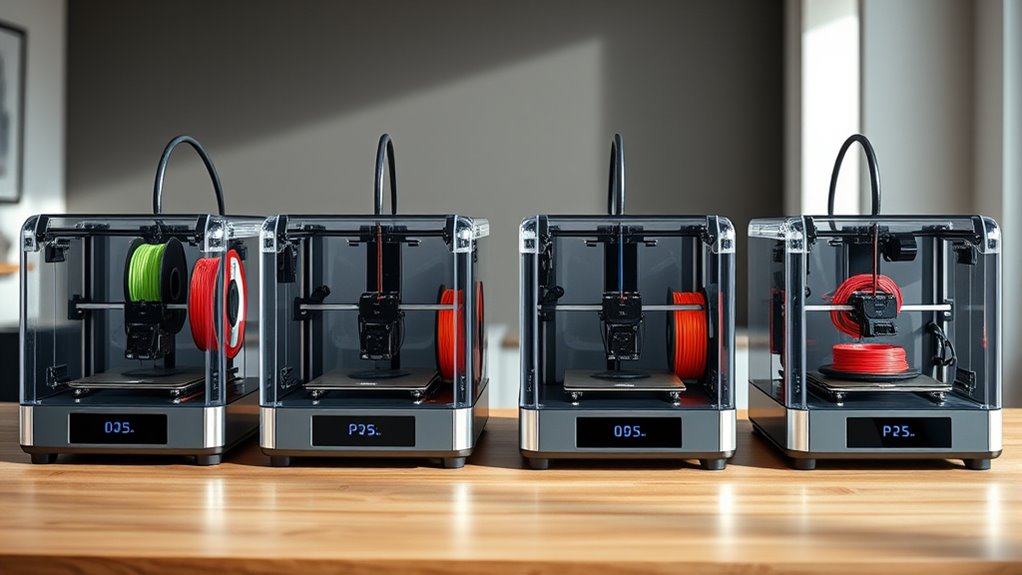
When choosing a budget 3D printer, I focus on factors like my spending limits and the size of projects I want to create. I also consider which materials the printer can handle, how easy it is to set up, and what maintenance it requires. These points help me pick a model that fits my needs without overspending.
Budget Limitations
Considering budget 3D printers often fall within the $100 to $500 range, it is crucial to focus on features that deliver the most value at this price point. These models typically have limited build volumes, usually around 100x100x100mm to 220x220x250mm, which restricts the size of objects you can print. They also often lack advanced features like automatic bed leveling or multi-material support, meaning you’ll need to calibrate manually and work with simpler filaments like PLA and TPU. Higher-temperature materials such as ABS or PETG might require upgrades or modifications. Additionally, you should be prepared for potential maintenance issues and software limitations that could affect print quality and ease of use. Recognizing these constraints helps set realistic expectations and guides smarter choices within your budget.
Build Volume Needs
Choosing the right build volume for your budget 3D printer depends on the size of the projects you’ll be working on. First, determine the maximum size of your typical projects to make certain the printer can handle them, as common budget models range from 100x100x100mm for small parts to 220x220x250mm for larger items. If you anticipate needing bigger prints later, look for a model with adjustable or expandable build space. Keep in mind that smaller build volumes often mean faster print times and less material used, making them ideal for quick prototyping or educational use. However, larger build volumes generally come at a higher cost and complexity. Balancing your project needs with your budget is key to choosing the right build volume.
Material Compatibility
Selecting a budget 3D printer requires guaranteeing it supports the filament types you plan to use, such as PLA, ABS, PETG, or TPU, to meet your specific project needs. Check the maximum nozzle and bed temperatures to confirm the printer can handle high-temperature materials like ABS or nylon. It’s also important to verify if the hotend and extruder can manage flexible or specialty filaments without clogging or feeding issues. Consider whether the printer allows easy swapping or upgrading of nozzles and extruders, which can expand your material options over time. Finally, review community forums and manufacturer specifications to identify any limitations or recommended filament brands. This knowledge helps ensure your chosen printer can reliably handle the materials you want to work with.
Ease of Setup
When you’re starting with a budget 3D printer, ease of setup can make a big difference in how quickly you get printing. Look for models that come pre-assembled or semi-assembled to save time and reduce frustration. Automatic bed leveling is a game-changer, eliminating manual calibration and ensuring your prints start smoothly. Choose printers with intuitive interfaces, like touchscreens or simple control panels, so you can operate them easily without a steep learning curve. Clear, detailed instructions and online tutorials are also essential, especially if you’re new to 3D printing. Ideally, aim for a setup process that takes under 30 minutes, so you can start printing sooner and avoid technical headaches. The simpler the setup, the faster you’ll enjoy your new 3D printer.
Maintenance Requirements
Regular maintenance is essential to keep budget 3D printers functioning smoothly and producing quality prints. I’ve found that cleaning nozzles and build plates regularly prevents clogs and ensures good adhesion. Over time, extruder parts like PTFE tubes and hotends wear out and need replacement to maintain excellent performance. Periodic calibration of bed leveling and extrusion settings is vital to keep print accuracy consistent. Fans and cooling systems can gather dust or become noisy, so cleaning or replacing them is necessary. Routine inspections of belts, pulleys, and linear rails help identify wear or looseness that could affect precision. Staying on top of these tasks might seem tedious, but it greatly extends your printer’s lifespan and guarantees better print quality.
Frequently Asked Questions
How Do I Maintain Print Quality on a Low-Budget 3D Printer?
Maintaining print quality on a low-budget 3D printer is totally doable. I always start by ensuring my bed is level and clean, as this makes a huge difference. I also check filament quality and store it properly to avoid moisture issues. Regularly updating firmware and adjusting print settings for different materials help improve results. Small tweaks and consistent maintenance keep my prints looking sharp without spending a lot.
What Safety Features Are Common in Affordable 3D Printers?
When I look at affordable 3D printers, I notice common safety features like thermal runaway protection, which prevents overheating, and enclosed designs that reduce fire risk and protect users from hot components. Many models also have auto-shutdown functions after printing, and some include filament sensors to avoid jams. These features help guarantee I can print safely without spending too much, giving me peace of mind with each project.
Can Budget 3D Printers Handle Advanced Materials?
Many budget 3D printers can handle advanced materials like PETG and ABS, but they often have limitations. I’ve found that while some affordable models offer heated beds and sturdy frames, they might struggle with higher temperature filaments or require upgrades. If you plan to work with advanced materials regularly, it’s worth investing in a slightly more expensive printer with better temperature control and stability to make certain of quality results.
What Are the Common Troubleshooting Issues With Budget 3D Printers?
Troubleshooting a budget 3D printer can feel like untangling a knot in a tangled ball of yarn. Common issues include bed adhesion problems, filament jams, and layer shifting. I’ve found that regular maintenance, proper calibration, and using quality filament make a huge difference. Don’t get discouraged; with patience and a little troubleshooting, your printer can produce impressive results without costing a fortune.
How Long Do Budget 3D Printers Typically Last?
When it comes to how long budget 3D printers last, I’ve found they usually hold up well for about 1 to 3 years with regular use. Proper maintenance, like cleaning and updates, can extend their lifespan. Of course, lower-cost models might need more repairs or replacements over time, but with good care, they can serve you quite reliably for quite a while.
Conclusion
If you’re like me, finding a budget 3D printer that balances quality and affordability is key. I once helped a friend start her small jewelry business using an Ender 3 — and it’s been a game-changer. Whether you’re printing for fun or small projects, these options prove you don’t need to spend a fortune for great results. Just pick one that fits your needs, and start bringing your ideas to life!

